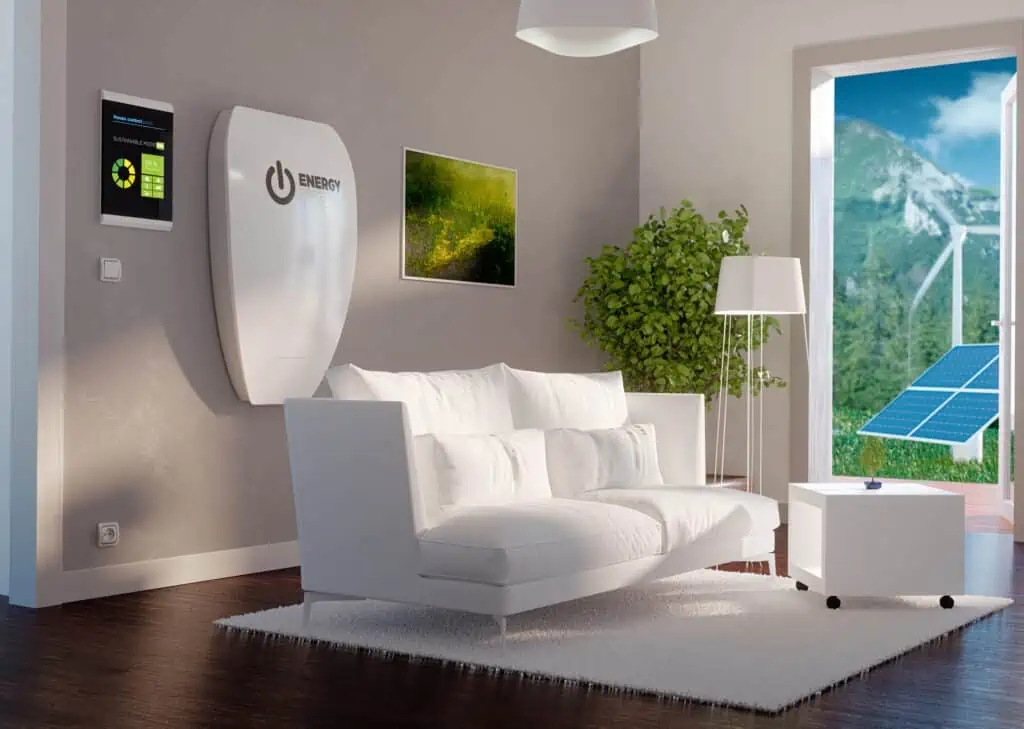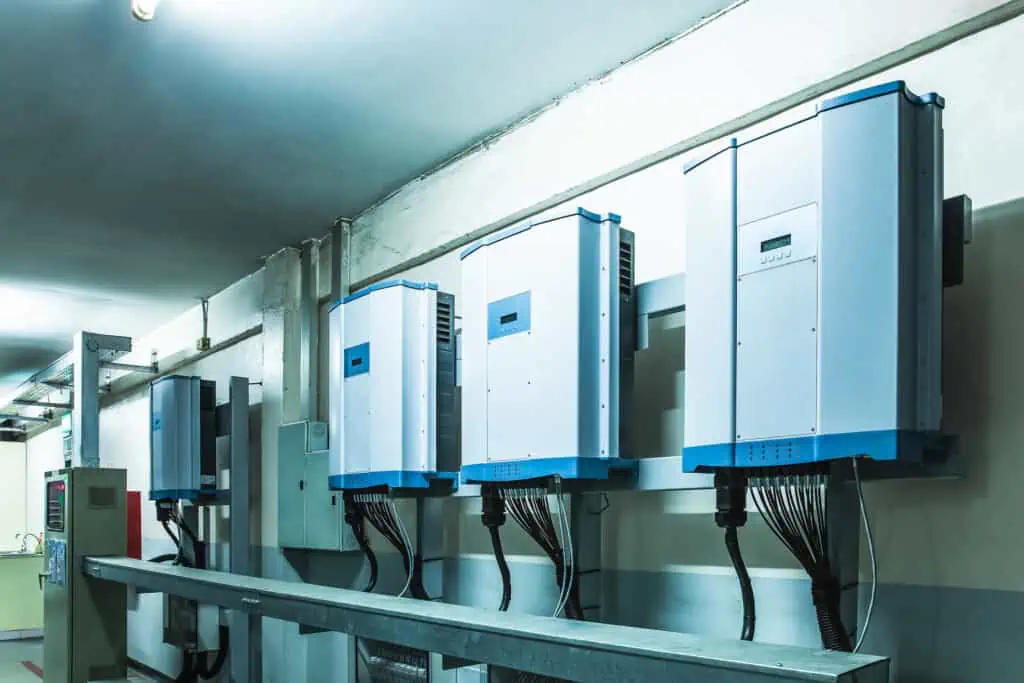The shift towards renewable energy is happening globally. As a result, solar power is gaining popularity among both homeowners and businesses.
At the heart of any solar energy system are solar batteries. These batteries store the energy produced by solar panels for future use.
As solar technology adoption grows, a common question arises. Is it safe to store solar energy storage systems indoors?
In this blog post, we will provide a brief overview of solar batteries and discuss the importance of storage in solar energy systems. We will also explore the pros and cons of indoor storage for energy storage batteries. This will help you make an informed decision on the best storage option for your specific needs.
Here’s the breakdown of what you can expect in this article:
- Types of Solar Batteries
- Factors to Consider when Choosing a Location for Solar Battery Storage
- Indoors vs. Outdoors: Weighing the Pros and Cons
- Recommended Indoor Locations for Solar Batteries
- Where Not to Install Solar Batteries Indoors
Contents
Types of Solar Batteries
Various solar battery types exist in the market, each having its pros and cons. Knowing the different types helps you decide which one suits your needs best.
1. Lead-Acid Batteries
These are the most common type of solar batteries and have been used for decades in off-grid solar systems. They are affordable and reliable but need regular maintenance and have a shorter lifespan than other types of batteries.
2. Lithium-Ion Batteries
Lithium-ion batteries are popular for their high energy density, long lifespan, and low maintenance. They cost more than lead-acid batteries but offer a long-term, high-performance option.
3. Flow Batteries
A liquid electrolyte is stored in separate tanks for this type of battery. When needed, it’s pumped through the battery. These batteries have a longer lifespan than lead-acid batteries but are costly and need ample space.
4. Nickel-Cadmium Batteries
These batteries are known for their durability and long lifespan. However, they are toxic and need careful disposal.
5. Sodium-Nickel Chloride Batteries
Gaining popularity, this new battery technology boasts high energy density and long life with low upkeep. Although pricier than lead-acid batteries, they’re ideal for those seeking advanced, high-performance solutions.
The type of solar battery bank you choose will depend on your specific needs and budget. It’s important to do your research and consult with a professional to determine which type of battery is best for your situation.
Factors to Consider When Choosing a Location for Solar Battery Storage
For optimal performance and longevity in a solar battery storage system, selecting the right location is crucial. Here are some factors to consider when selecting a site for your solar battery storage:
Safety
Safety should be a top priority when choosing a location for solar battery storage. Avoid storing batteries near flammable materials or in areas with potential fire hazards.
Consider using a secure cabinet or enclosure to protect against theft or tampering.
Ventilation
Solar panel batteries release gases during operation. Thus, proper ventilation is important to prevent the buildup of potentially dangerous gases.
Make sure the storage location has adequate ventilation to allow for proper gas dispersion.
Accessibility
It’s crucial to select an accessible location for solar batteries, as they may need periodic checks or servicing. Steer clear of areas that involve climbing or challenging access.
Temperature
Store solar batteries at 50–80°F for best results. Avoid extreme temperatures to maintain performance and lifespan.
Cost
Consider the cost implications of the chosen location. These include:
-
installation expenses
-
ongoing maintenance costs
-
potential modifications required to accommodate the solar battery storage system
Selecting a cost-effective location can help you maximize the return on investment (ROI) for your solar energy system.
Compatibility
Ensure that your chosen location is compatible with the specific requirements of your solar battery system. This includes factors such as available space, structural support, and electrical connections.
Ask a professional installer to verify if your chosen location meets the requirements.
Regulations
Learn local building codes and zoning rules before choosing a solar battery storage location. Compliance with these regulations is essential to avoid potential fines or legal issues in the future.
Indoors vs. Outdoors: Weighing the Pros and Cons
Indoor Storage
Pros:
- Protection from the elements. Storing energy batteries indoors provides them with protection from harsh weather conditions. This can help prolong the lifespan of the batteries and maintain their efficiency.
- Reduced risk of theft. Indoor storage makes it less likely that your solar batteries will be stolen or tampered with, as they are not exposed to potential thieves. This added security can provide peace of mind and protect your investment in solar energy.
- Easier access and reduced noise. Indoor storage allows for easier access to the batteries for maintenance, inspection, and repair. Also, storing batteries indoors can reduce the noise generated by the battery system. This leads to a quieter living environment.
Cons:
- Space requirements. One major drawback of indoor storage is that it takes up valuable space inside your home. Storage batteries can be bulky. Thus, finding an appropriate location for them may need sacrificing storage or living space.
- Installation costs. Indoor solar battery installations may cost more than outdoor ones. This is because they require extra labor, materials, and potential home modifications. These extra costs should be considered when deciding on an indoor storage solution.
- Compatibility issues. Some solar panels and battery systems might not work indoors due to size, ventilation, or temperature needs. Talk to a professional installer before choosing indoor storage to make sure it’s safe and effective.
Outdoor Storage
Pros:
- No indoor space requirements. One of the main advantages of outdoor storage is that it doesn’t take up any space inside your home. This helps people with limited indoor space or those who don’t want big equipment in their living areas.
- Lower installation costs. Outdoor storage can be less expensive to install compared to indoor storage. This is because outdoor installations often need fewer property changes and have lower labor and material costs.
- Greater compatibility with solar panels. Outdoor storage may be more compatible with a wider variety of solar panels and battery systems. It has fewer size, ventilation, and temperature control limits than indoor storage.
Cons:
- Exposure to the elements. Storing batteries outdoors means they are not protected from harsh weather conditions. This exposure can potentially decrease the lifespan and efficiency of the batteries.
- Increased risk of theft. Outdoor storage makes batteries more accessible to potential thieves. This increases the risk of theft or tampering. To mitigate this risk, it’s essential to invest in proper security measures, such as fencing, locks, or surveillance systems.
- More noise. Solar battery systems can generate noise during operation. This may be more noticeable when stored outdoors. This can be a concern for homeowners who are sensitive to noise or who have neighbors in proximity.
- Increased maintenance requirements. Outdoor storage may need more frequent maintenance due to exposure to the elements, dirt, and debris. Frequent checks and cleaning help keep the solar battery system working well.
Recommended Indoor Locations for Solar Batteries
For indoor solar panel battery storage, homeowners should consider a few suggested locations. Here are some recommended indoor locations for solar battery storage:
1. Garage or Utility Room
These areas are often well-ventilated and away from living spaces. They also provide easy access for maintenance and monitoring.
2. Basement
A cool, dry basement can be a suitable location for solar energy storage. But, it’s important to ensure that the area is well-ventilated and free from moisture.
3. Dedicated Battery Room
For those with larger solar systems, a dedicated battery room may be necessary. It should have good ventilation, fire safety, and be locked against unauthorized access.
Where Not to Install Solar Batteries Indoors
Prohibited Areas Due to Safety Concerns
It’s also essential to avoid certain areas to ensure the safety of both the residents and the battery system. Some of these prohibited areas include:
- Living spaces. Avoid installing energy batteries in bedrooms, living rooms, or other areas where people spend a lot of time. This is because batteries can emit gases, generate heat, and produce noise, which can be harmful or disruptive to occupants.
- Enclosed, unventilated spaces. Storage batteries require proper ventilation to prevent overheating and maintain efficiency. Installing them in an enclosed space without adequate airflow can lead to dangerous conditions. These include thermal runaway or fire.
- Areas prone to flooding or water leaks. Solar batteries and their components should be kept away from water sources and areas that are susceptible to flooding or leaks. Exposure to water can cause electrical shorts, corrosion, and damage to the batteries. These can lead to potential safety hazards.
Flammable Materials and Combustible Liquids
Storing solar batteries near flammable items or liquids is risky, as heat from the batteries can ignite them. To minimize the risk of fire or explosion, avoid installing solar batteries near:
- Gas appliances. Keep solar batteries away from gas-powered appliances, such as stoves, water heaters, or furnaces. These appliances can emit flammable gases or vapors that could be ignited by the heat generated by the batteries.
- Fuel storage. Avoid placing solar batteries near stored fuels, such as gasoline, propane, or diesel. The heat from the batteries could cause these fuels to ignite or explode.
- Flammable materials. Keep solar batteries away from flammable materials like paper, wood, textiles, or chemicals. These materials can easily catch fire if exposed to high temperatures or sparks from the battery system.
Conclusion
As the use of solar technology continues to grow, it’s important to consider the best storage options for solar batteries. While outdoor storage is often the default choice, indoor storage can be a viable option. This, of course, depends on your specific needs and circumstances.
By weighing the pros and cons and considering some factors, you can make an informed decision on the best location for your solar batteries. With the right storage solution, you can maximize the efficiency and effectiveness of your solar energy system. You can also contribute to a more sustainable future.
Visit our website to learn more about solar batteries. You can also contact us if you need help with your battery storage.


